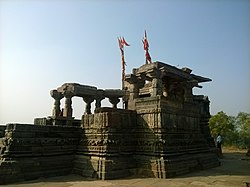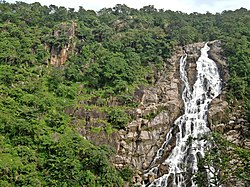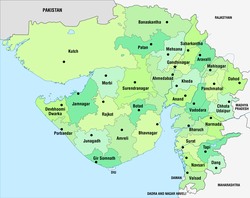Dahod district | |
|---|---|
Top: Bavaka Shiva temple Bottom: Falls in Ratanmahal Wildlife Sanctuary | |
 Location of district in Gujarat | |
| Coordinates: 22°50′2″N74°15′28″E / 22.83389°N 74.25778°E | |
| Country | |
| State | Gujarat |
| Collector & DM | Dr. Harshit Gosavi I.A.S. |
| Headquarters | Dahod |
| Area | |
• Total | 3,642 km2 (1,406 sq mi) |
| Population (2011) | |
• Total | 2,127,086 |
| • Density | 580/km2 (1,500/sq mi) |
| Languages | |
| • Official | Gujarati, Hindi, English |
| Time zone | UTC+5:30 (IST) |
| Vehicle registration | GJ 20 |
| Website | dahod |
Dahod district is a district of Gujarat state in western India. This largely tribal district is mostly covered by forests and hills.



